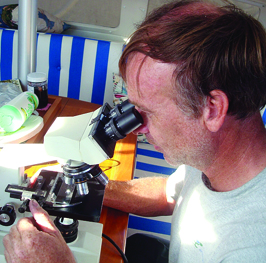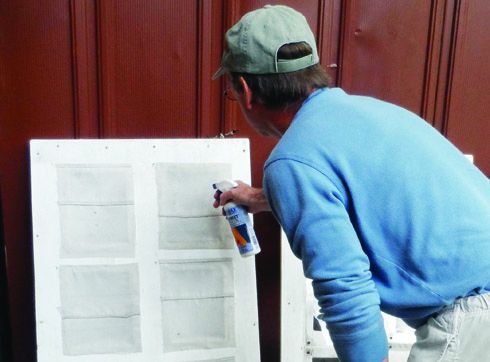If you’re getting ready to store your boat in a wet or humid location and don’t want to lose the battle with mildew, then you’ll definitely want to read our report in the November 2013 issue of Practical Sailor. PS tester Drew Frye made a pleasant little discovery when he was researching and testing various anti-mildew protectants. Two inexpensive homemade concoctions did as well as or better than retail formulas that are 20 to 100 times more expensive. It wasn’t a huge a surprise for Frye, who based the homebrew formulas on some of the more effective anti-mildew products from our previous tests.
The 13-product test field comprised liquid sprays, and gels and solids that work through emitting a vapor. The three vapor products were Star brites NosGUARD SG, which reacts with water to release chlorine-dioxide gas; Forespar Tea Tree Power, a tea tree oil-based gel in a vented tub; and Pur-A-Fy Air from Natures Innovative Solutions, a lemongrass oil-based gel.

The liquid-spray group included Forespars Tea Tree Oil Spray, Henkle Chemicals Renuzit, Siamons Concrobium, Goldshield, and 3Ms Marine Mildew Block, which did well in our June 2010 test. Concrobium is available in liquid and vapor form; we tested the liquid. Our most effective commercial product, Goldshield 5 (diluted to the equivalent of Goldshield 75), is an quaternary ammonium formula developed by scientists at Emory University. As our dehumidifier field tests demonstrated, the first line of defense is controlling humidity. Something I have touched on in previous blog posts about fighting mildew. For sealed lockers, or tight quarters that are difficult to treat or ventilate, you might also want to look at our report on chemical dessican’ts like DampRid.
The two homemade spray formulas we tested each cost about one penny per ounce. Like the other mildew preventers in our test, you use these as cleaners by simply spraying the product on, wiping any excess away, and leaving it on. Before applying to any fabric, test the spray on an inconspicuous sample spot.
Formula A
1 quart hot water
1 tablespoon baking soda (sodium bicarbonate)
2 tablespoons washing soda (sodium carbonate)
2 tablespoons trisodium phosphate (TSP)
Much like Concrobium (which it is modeled after), our homemade Formula A removed the mildew from test carpet on board and kept it away, even though the area got wet again. It was also very effective in the moist-environment lab test.
Formula B
1 quart hot water
2 tablespoons baking soda
2 tablespoons Borax
1 tablespoon TSP
Formula B was the second-place performer in the liquid group. It was certainly the best value. It cleaned well, prevented mildew from returning to the carpet, and greatly slowed mildew infection in the moist-environment test in the lab.
We also tried treating with plain vinegar, which reportedly works on some hard surfaces, but testers found the smell a little too overpowering. A 10-percent solution of household bleach (3-percent sodium hypochlorite) was one of the best cleaners, but this has to be used with care. Bleach will bleed or degrade many fabrics, and can harm the marine environment. For complete results and more tips on keeping your boat mildew free, be sure to check out the full test report on mildew preventatives at www.practical-sailor.com. Non-subscribers, or those who’d rather save some time and support our testing program, can also dive into our complete two-volume report on mildew cleaning and prevention The Mildew-Free Boat, which will help you take care of mildew once and for all, with minimal effort.
For serious cleaning jobs ahead, we also have an e-book dedicated to Marine Cleaners, covering everything from waxes to teak cleaners to metal polishes.



































